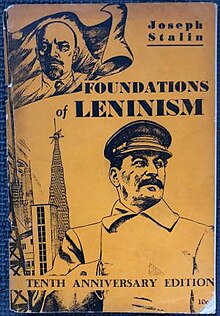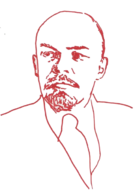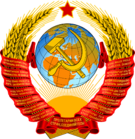Marxism–Leninism
| Union of Soviet Socialist Republics (USSR) |
|---|
| History |
| History of the USSR, Russian Revolution of 1917 (February Revolution, October Revolution), Collapse of the USSR |
| Politics |
| Communist Party of the Soviet Union, Bolshevism, (before 1950s) Marxism–Leninism, Revisionism (after 1956) |
| Economy |
| Economics of the Soviet Union, Five-Year Plans |
| Soviet Republics (from 1956 until dissolution) |
| Armenian SSR, Azerbaijan SSR, Byelorussian SSR, Estonian SSR, Georgian SSR, Kazakh SSR, Kirghiz SSR, Latvian SSR, Lithuanian SSR, Moldavian SSR, Russian SFSR, Tajik SSR, Turkmen SSR, Ukrainian SSR, Uzbek SSR |
Marxism–Leninism is a communist tendency developed by Joseph Stalin as a continuation of Leninist theory. Its creation came about during a period when competing factions within the Soviet leadership attempted to establish their legitimacy as Lenin's political successors following his death. Soviet leaders such as Leon Trotsky, Grigory Zinoviev, and Joseph Stalin wrote works developing the concept of a specifically Leninist ideology. Stalin coined the term to describe an ideology which considers Lenin's political thought to be a necessary development of Marxism, and made the term popular through his 1938 work The History of the Communist Party of the Soviet Union (Bolsheviks). It was the official ideology of the Soviet Union and other socialist states.
Background
Ideology

Democratic centralism
A Marxist–Leninist party is organized according to democratic centralism. This means that first the party democratically decides something, and then all members are required to follow that decision and not work against it. If members still disagree with the decision, they are expected to request to discuss the issue again, not to form a faction or another party.
Vanguard party
Intensification of class struggle under socialism
Socialist commodity production
Analysis of imperialism
Anti-revisionism
The national question (national liberation and the right of nations to self-determination)
Socialism in one country
Political economy, crises and revolution
The lower and higher phases of communism
Other forms
Mao Zedong Thought
Marxism–Leninism–Stalinism
Marxism–Leninism–Stalinism is often called "Hoxhaism", but this label is incorrect. Hoxhaists are Leninist–Stalinists.[1][better source needed][disputed ]
Ho Chi Minh Thought
Criticism
Marxist critics argue that Marxism–Leninism works from the assumption that the Soviet Union was a socialist society and use this as reference point to navigate both political theory and practice. The consequence of this being that Marxism–Leninism is reconciled with bourgeois concepts such as the nation-state and nationalism. The most common criticism of Marxism–Leninism from Trotskyists is that rather than seeking to spread the socialist revolution throughout the world through direct revolutionary action, hence pursuing "Proletarian Internationalism," Stalin instead only assisted existing socialist revolutions, believing that the Soviet Union was the only country in the world capable of achieving socialism due to the success of its own revolution, and actually enacted a foreign policy of "peaceful coexistence" with the Western capitalist powers. [citation needed] Stalin named this theory "socialism in one country".
Trotsky
Bordiga
Paul Mattick
References
http://en.internationalism.org/ir/96/leninists
https://isreview.org/issue/93/zinovievism-and-degeneration-world-communism
https://archive.org/details/25ZinovievLeninizm
https://www.marxists.org/history/etol/newspape/ni/vol10/no03/trotsky.htm
https://libcom.org/library/revolutionary-alternative-left-wing-politics
The History of the Communist Party of the Soviet Union (Bolsheviks) (1938)
- ↑ "Revolutionary Spirit: The Marxist-Leninist Guide to Leftist Factions". Revolutionary Spirit. 2010-02-27. Retrieved 2023-01-08.


